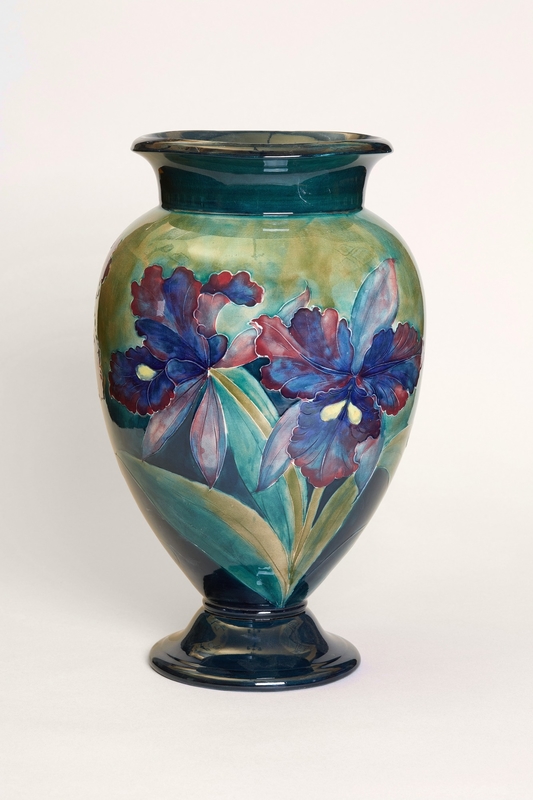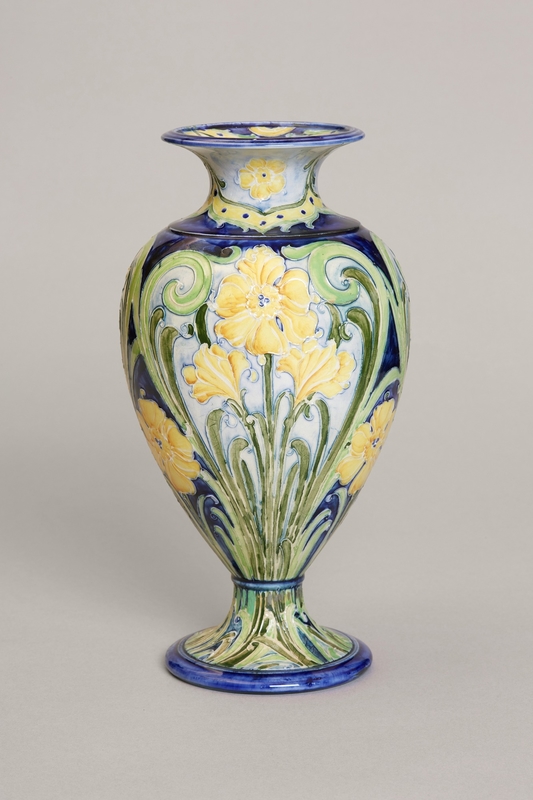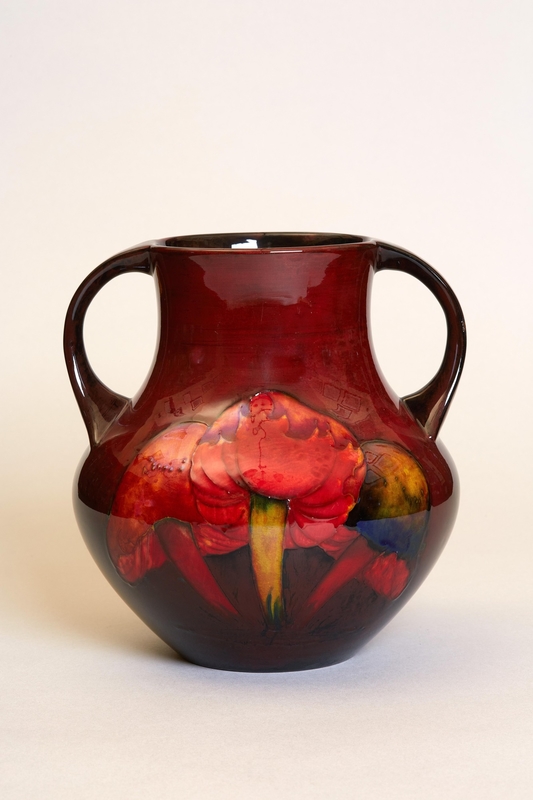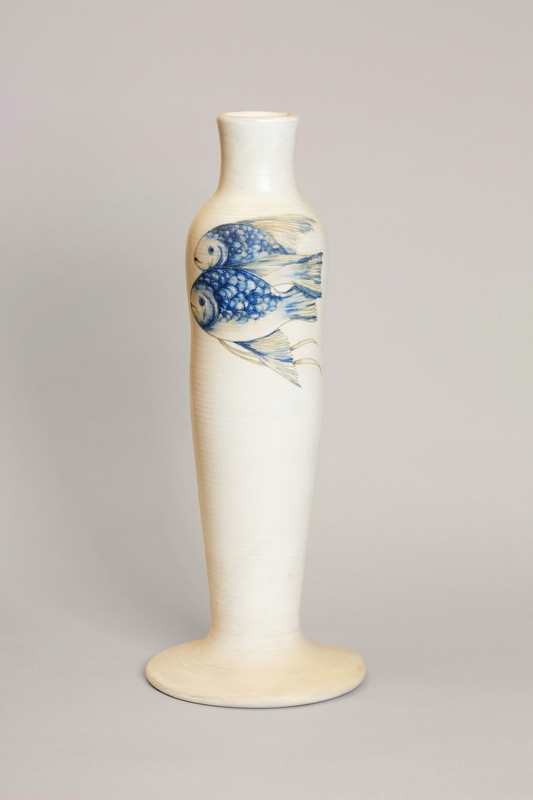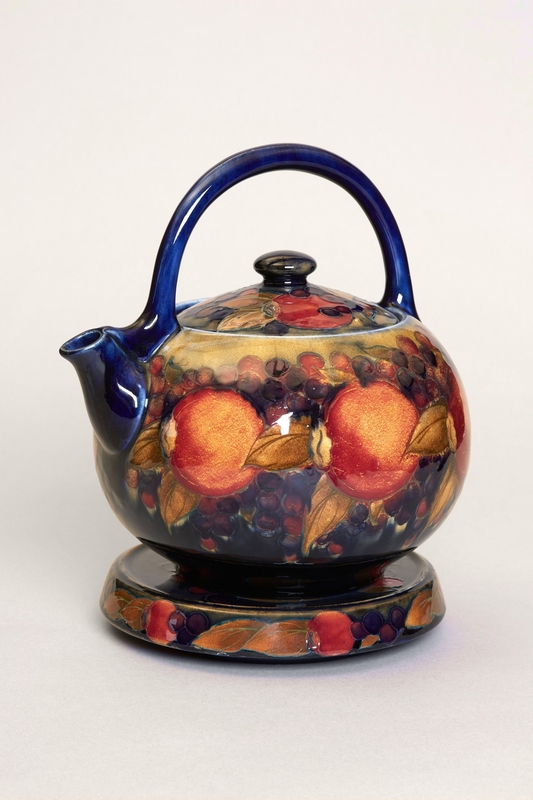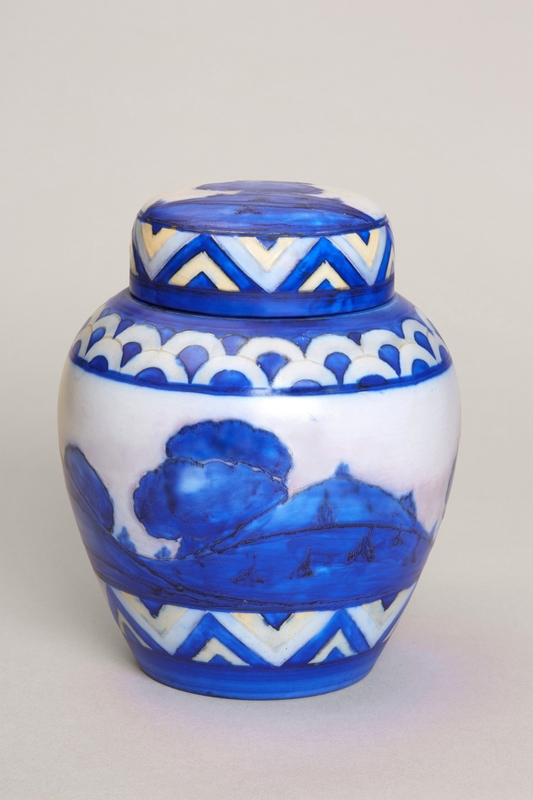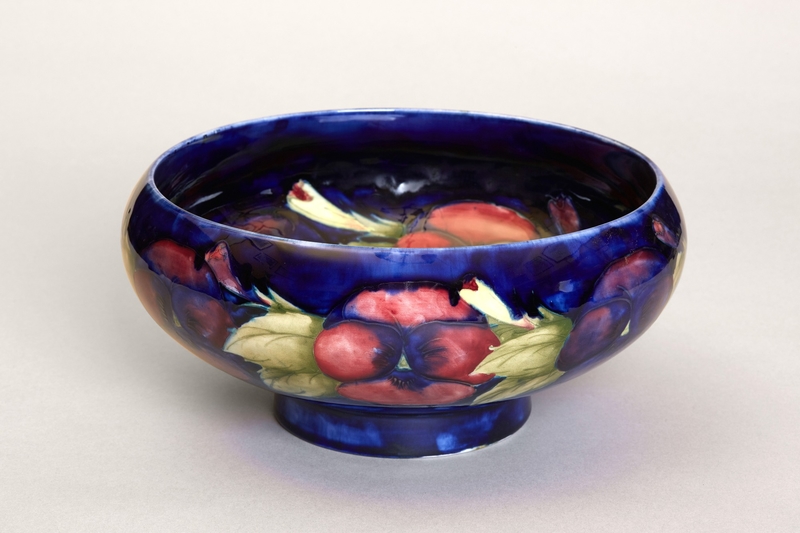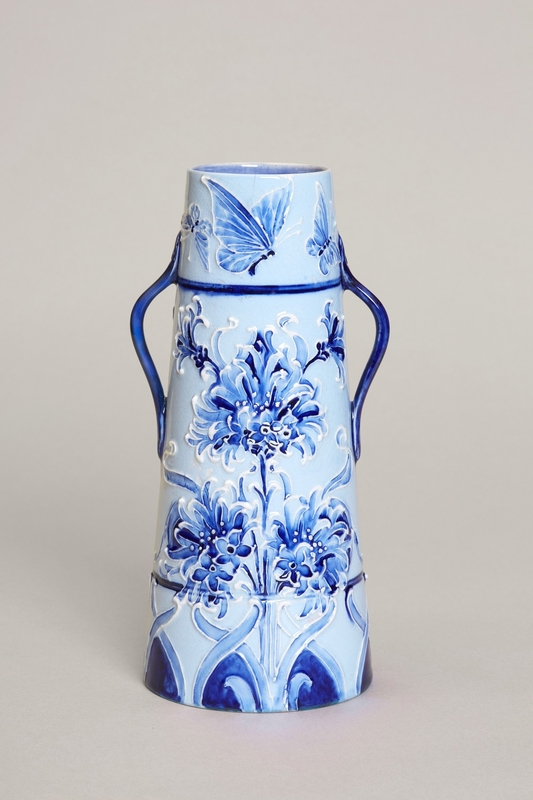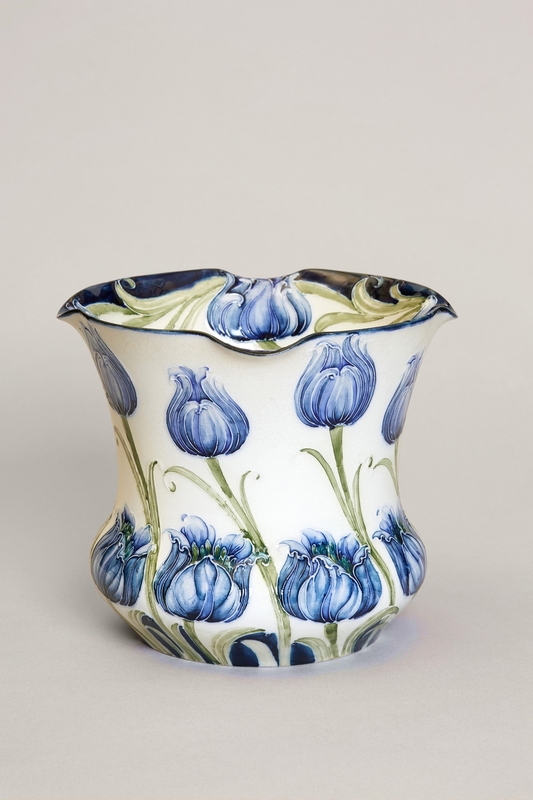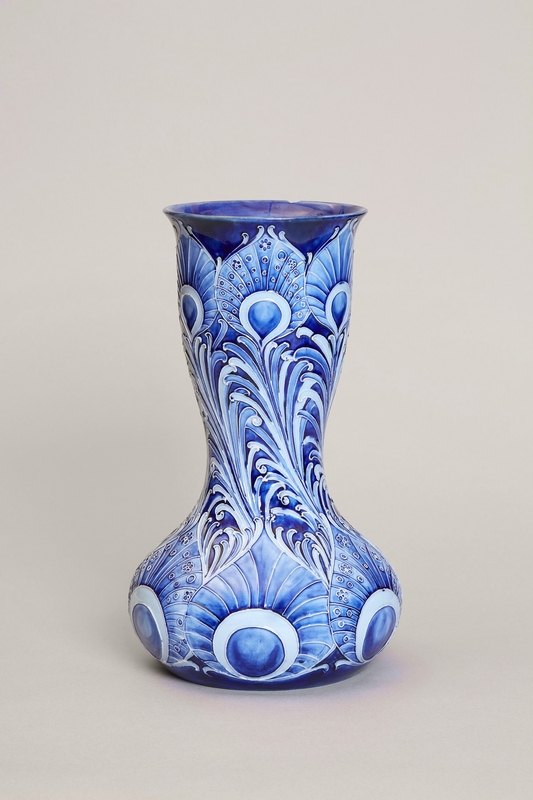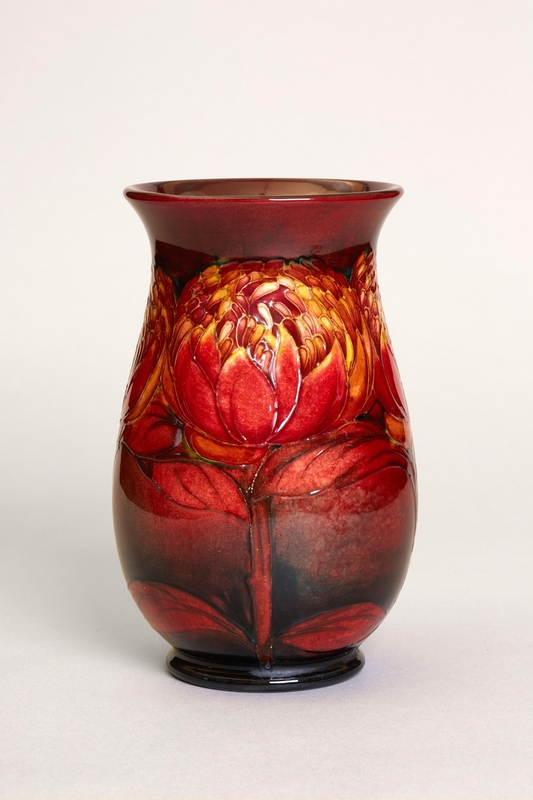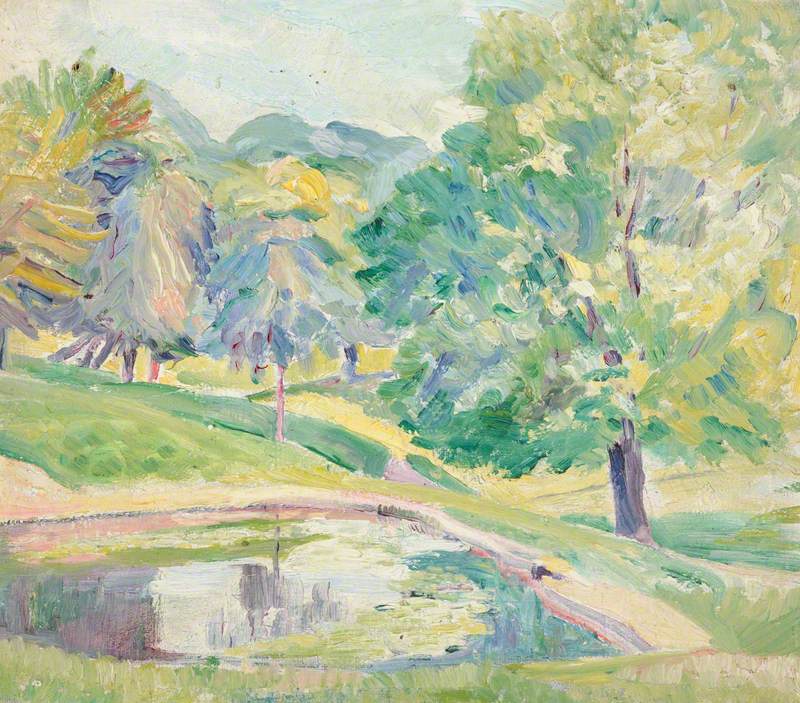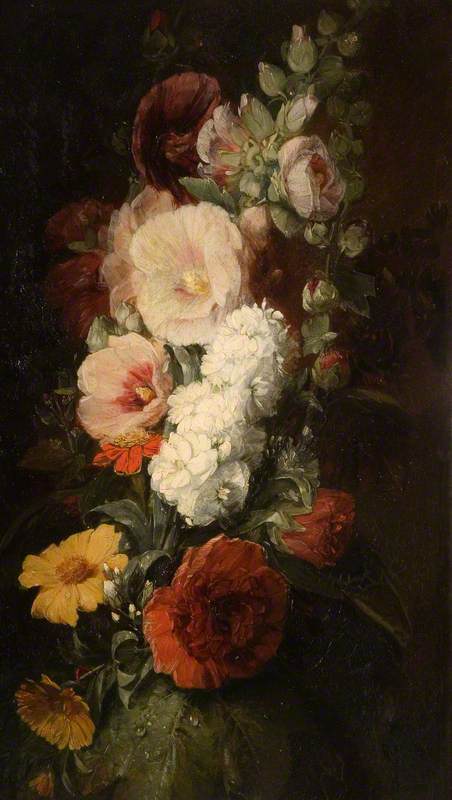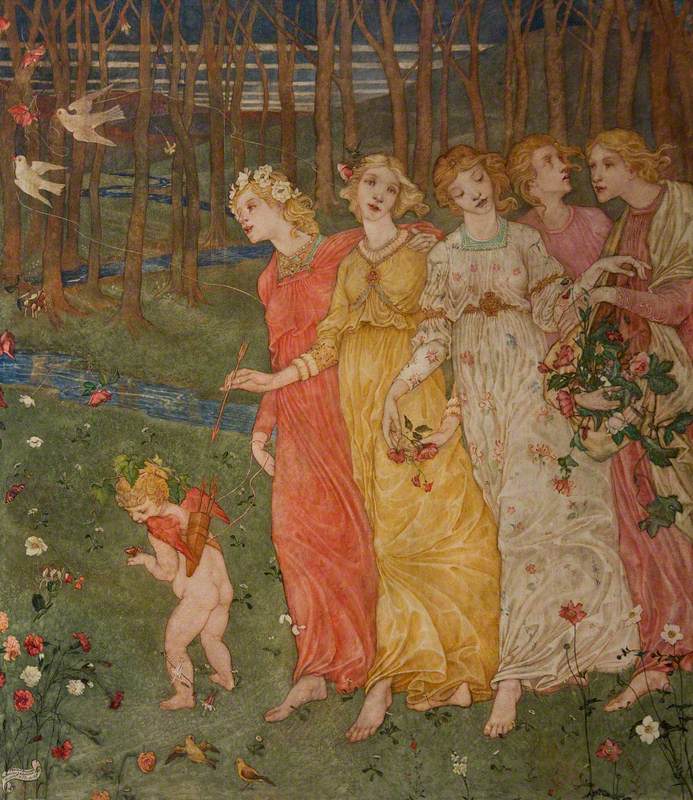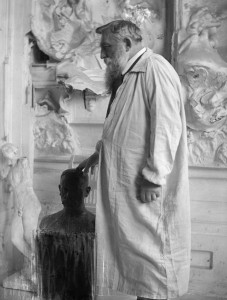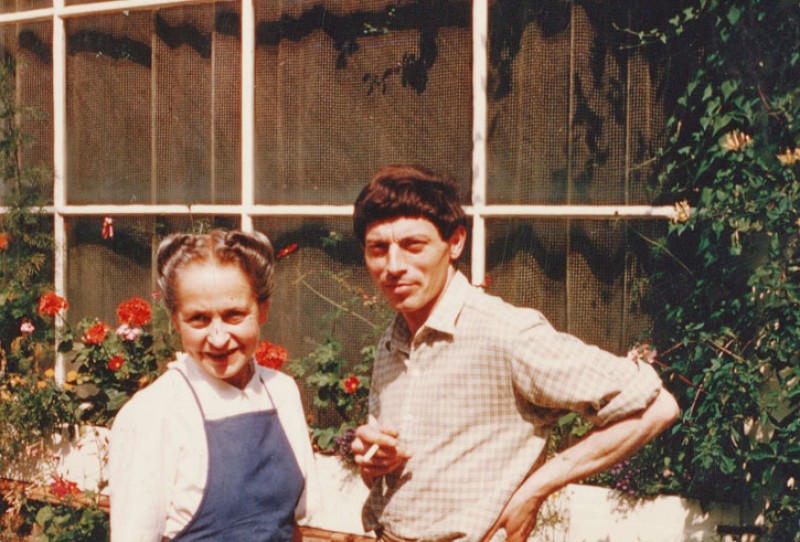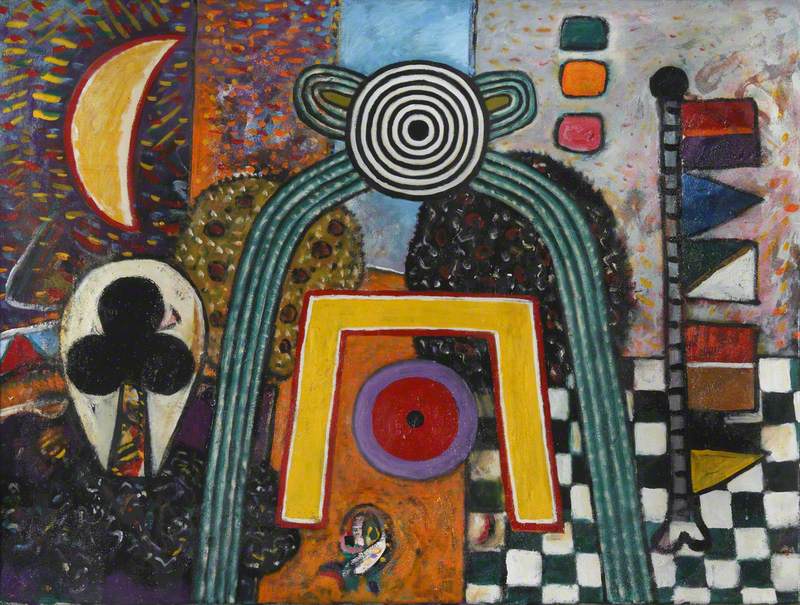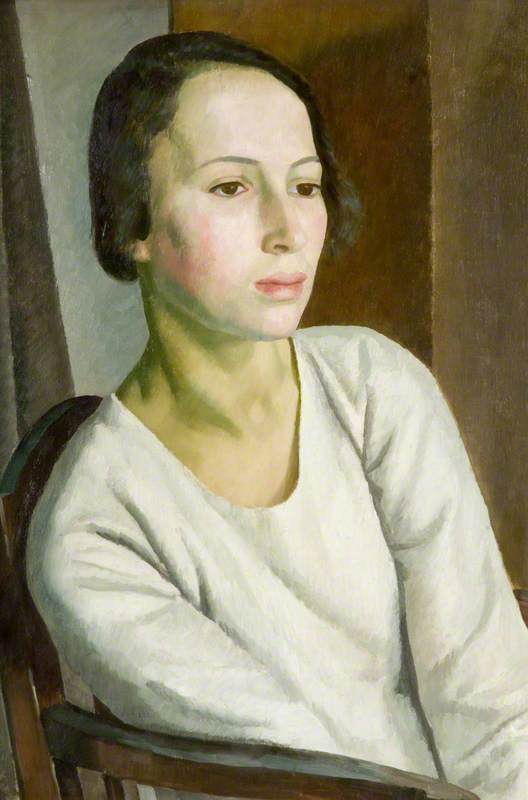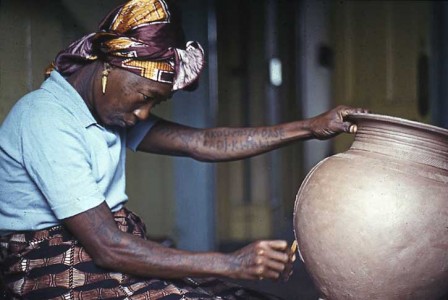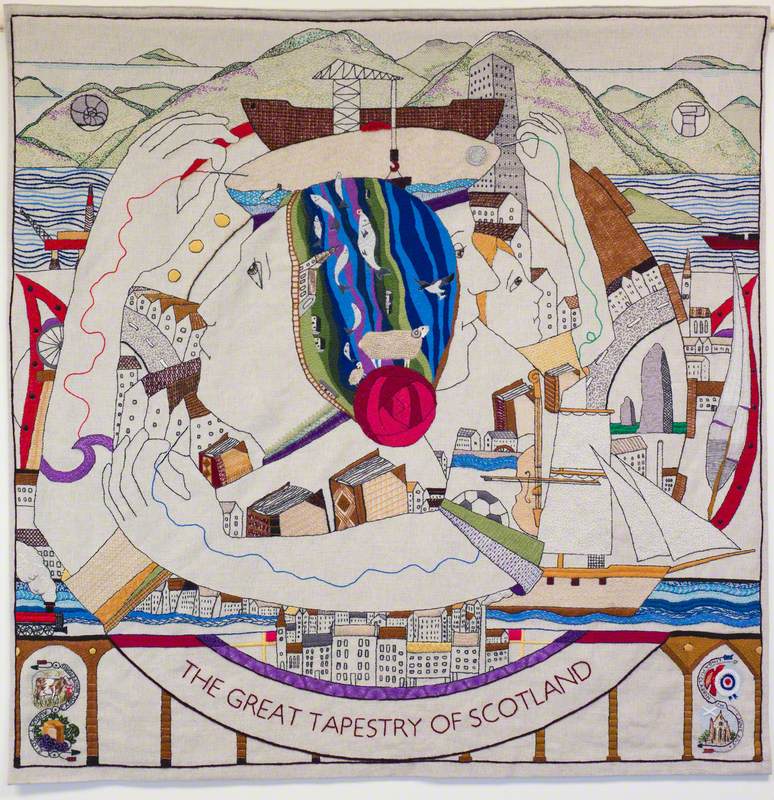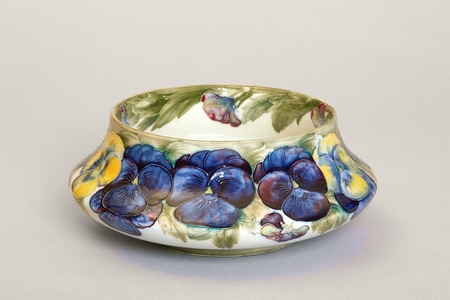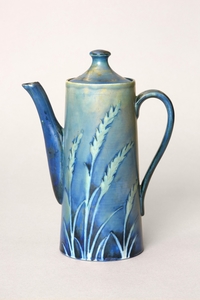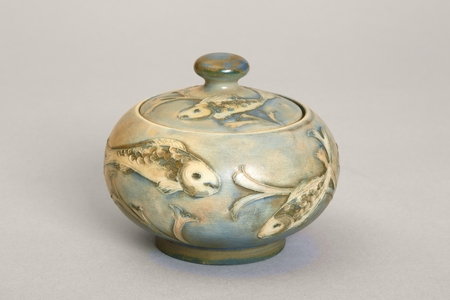Tucked away behind Cobridge Park, Burslem, Stoke-on-Trent, is a picturesque factory which makes fine art pottery. Along one boundary, a visitor will find a walkway which was once a rail loop line from Etruria to Kidsgrove. A bowler-hatted Willam Moorcroft would have stepped off the train at Cobridge station, walked through a wrought-iron gate and into the new factory which still houses the company he founded – with financial support from original shareholders, Liberty of London – and which proudly carries his name to this day.
The Moorcroft factory, 1930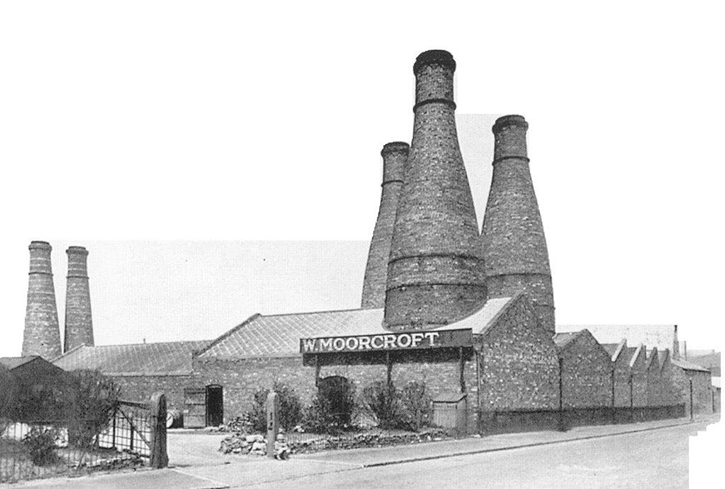
The factory was built in 1913, initially with a single-bottle oven. A further two were added in 1916 and 1919, and two more in 1919–1920: of the final two, one was to fire 'flambé' ware and the other to fire lustreware. Only the large 1919 bottle oven survives to this day, itself a Grade II Listed Building of 'Outstanding Architectural and Historic Merit'.
The factory belongs to W. Moorcroft Ltd, or more simply 'Moorcroft'. Today, thanks to designs from the world-famous Moorcroft Design Studio and the consummate skills of a dedicated workforce, Moorcroft pottery enjoys unprecedented popularity and esteem.
Neil Swindell's book 'William Moorcroft: Behind The Glaze'
The life story of William Moorcroft is captured in this book, which can be purchased at moorcroft.com 
William gleaned from his father, Thomas Moorcroft, a botanical artist, that the consummate skills of botanical design and a passion for the natural world were not enough for fame and glory. In truth, to become an icon for the applied arts, success lies not simply in surface decoration and shape design, as these change with what is in vogue during each generation. Something more is always needed: a new decorative style and ceramic alchemy.
Whilst the emerging Art Nouveau designs of the continent inspired the young William Moorcroft in terms of shape and design, it was to be in his home of The Potteries where he would perfect his ceramic alchemy, during his first job in 1897 as a designer for James Macintyre & Co., which he obtained after a period of study at the National Art Training School (later known as the Royal College of Art). Following the award of gold medals from across the Atlantic in St Louis in 1908 and from the Paris Exhibition in 1925, William, within a few years of this honour, would become Potter to Elizabeth II: in 1928, W. Moorcroft Limited was appointed Potters to Her Majesty the Queen, an honour of which William himself was justifiably proud.
William Moorcroft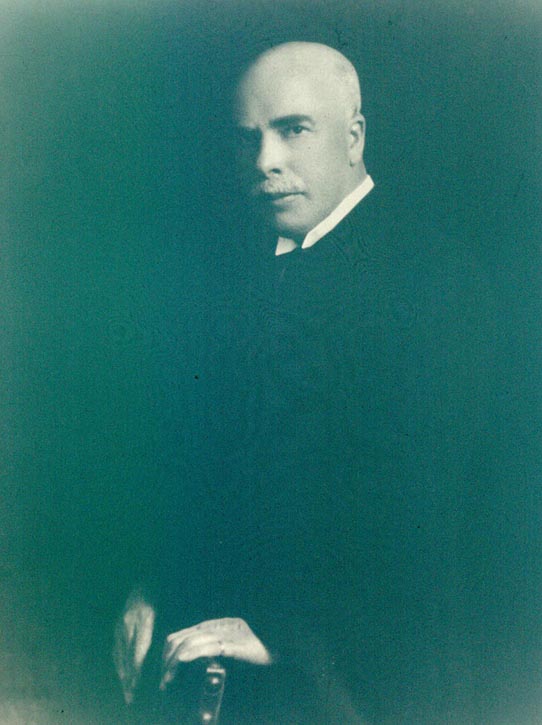
William had been joined by his son, Walter in the mid-1930s. In 1939, Walter joined the army in military intelligence, where he served throughout the Second World War. He was demobbed in 1945, shortly after his father suffered a severe stroke. Almost immediately, on 15th October 1945, William Moorcroft died. Walter took on the company at the point where his father had left off. During his working lifetime of 48 years, William Moorcroft produced 64 new designs.
The ambitious designer and ceramic chemist was, indeed, a trailblazer. Initially only cobalt blue was available, and William applied this in various shades of intensity to create 'blue-on-blue' ware. Under the skilled hand of William, 'blue-on-blue' pottery mutated into what was subsequently called Florian ware. This was the name of the style which established William Moorcroft as a world-class designer. It was launched in 1898 and represented a blend between contemporary Art Nouveau and the decorative traditions of William Morris and the Arts & Crafts movement.
Moorcroft created many different Florian patterns, the majority based on English flowers: poppies, violets, tulips, irises, cornflowers, daisies and roses. His success was immediate. Today, whilst Moorcroft is still made using the blueprint established by Wiliam over 150 years ago, a vast array of metallic oxide fusions have now been established by Moorcroft's artists.
We like to think that if William Moorcroft walked into Moorcroft today, he would be delighted at how our decorators have harnessed metallic oxides over the last 100 years to create designs utilising a naturalistic colour palette beyond the spectrum available to him. Moorcroft designs are not only outlined by rubbing an inked design – with the ink burning off during the firing process, onto a leather hard vessel – but tubelined with liquid clay slip. Using a coloured slip creates a raised colour barrier, sometimes with the careful use of sgraffito to incise greater definition into the clay. The hand application of tubelining, or slip-trailing, is what makes Moorcroft so well-known around the world. The below vase by William Moorcroft extenuates the raised tubelined barrier using simple blue-on-blue colour variants.
The paints used today are metallic oxides, with the use of the dangerous lead oxide used by Wiliam dropped upon the discovery of the dangers of lead poisoning in the mid-twentieth century. Modern paints are mixed with either gum Arabic or bentonite as a thickener. Water is then added to achieve the strength of colour needed. Over the years, Moorcroft artists have perfected the use of a 'floating' technique. This involves gathering as much paint as possible into the brush. They then guide the paint over the surface of the clay, allowing it to float within the defined areas. By tilting the pot, the paint is encouraged to flow in certain directions. The excess paint lying on the surface is drawn back from the clay into the brush, or absorbed into the body of the clay, drying almost immediately.
Tubelining a vase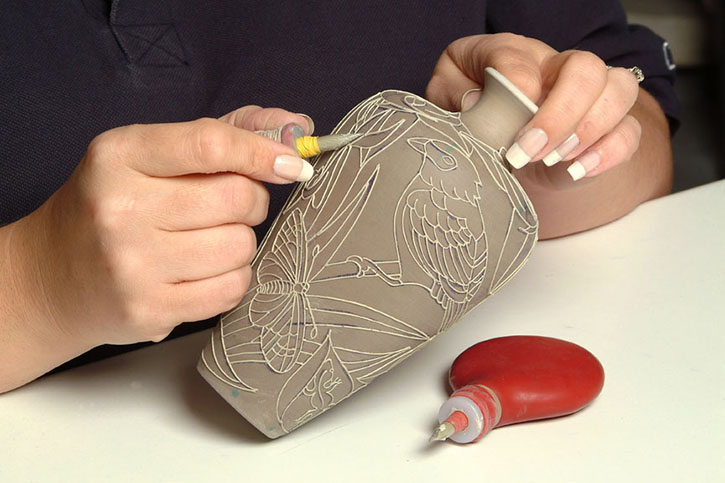
The painter can build the layers of paint to achieve depth of colour on the finished piece – an incredibly time-consuming process. In some instances, there may be two or three different colours used in one area to achieve a particular hue. Finally, Moorcroft artistry involves blending the colours with the painter's fingertips or the palms of their hand, giving shading and tone. During the firing, the lower colours put on first will burn through to the surface. Once the piece is complete the painter will highlight the factory marks with a wash of colour, and then paint their initials onto the base, so that along with the tubeliner we will know exactly who has created the piece.
Arts and Crafts for all seasons – summer (tubelining master)
vase by Nicola Slaney 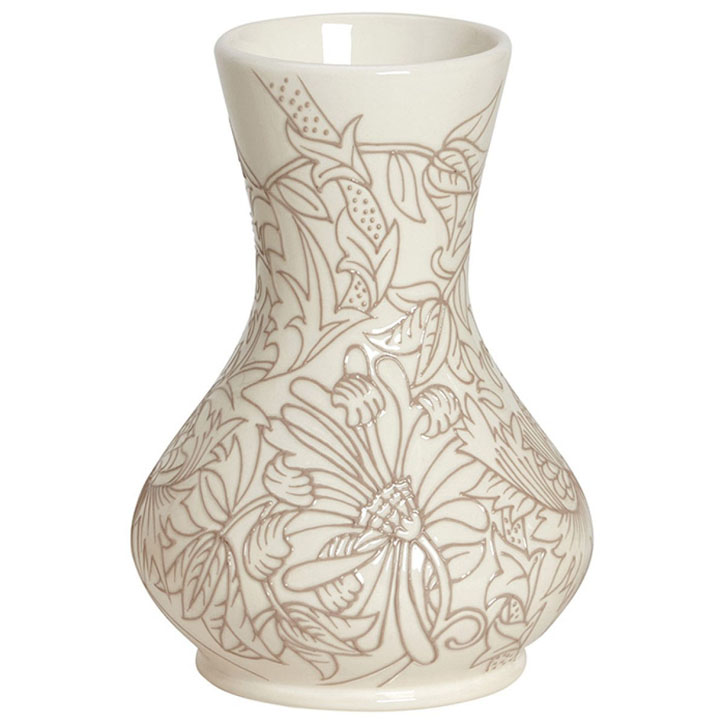
Arts and Crafts for all seasons – summer (limited edition 15)
vase by Nicola Slaney 
The Arts and Crafts for all seasons – Summer vase by Nicola Slaney (available in the Art UK Shop), with its distinctive Art Nouveau shape and design movement, exemplifies just how far Moorcroft has come in terms of new metallic oxide fusions whilst still keeping William's unique blend of Arts & Crafts and Art Nouveau design. As a heritage pottery, we very much believe that Moorcroft's collaborations with the Royal Horticultural Society and the British Iris Society, which have both grown considerably since William's era, would delight William intensely.
To William, ignoring subtle hues of the created world in artwork would be, to use his own words, 'as offensive as painting the bark of a tree'. Bearded Iris by Nicola Slaney – a Moorcroft designer who has created numerous collections for the RHS – is a modern rendition of Williams' work and showcases the advance in colour variants that Moorcroft artists have harnessed over the last century. It is also available for sale in the Art UK Shop.
Bearded Iris
lamp by Nicola Slaney 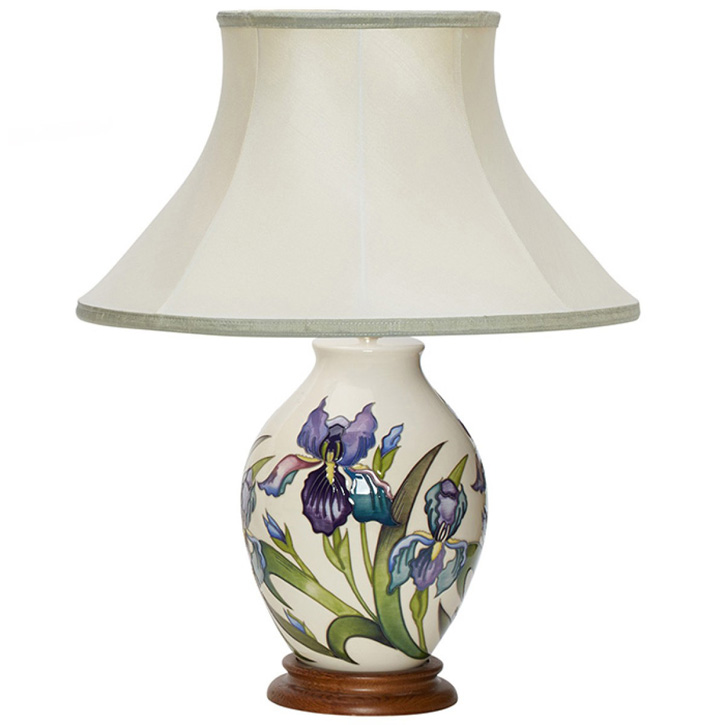
The artistry achieved in this design is remarkable, with falls complete with violet hues flushed aquamarine from a centre that appears to move like a carp's tail of almost iridescent violet. This is a design that extenuates poetic movement with effortless grace.
In terms of colour fusions, nothing William created compares to his flambé ware. Sadly, the flambé firing technique was both time-consuming and dangerous. Reduction firing produced carbon monoxide as a by-product and lead was used in the manufacturing process. This is why Moorcroft decided to abandon flambé glazes more than three decades ago. At the time, William was oblivious to the dangers, with his flambé Waratah design, featuring the native Australian plant, being well received when he visited the country and highly sought after on the secondary market. Very large examples of the Waratah design can be seen illustrated in Paul Atterbury's 2005 Moorcroft: Revised Edition 1897–1993, published by Dennis and Edwards.
By little short of a miracle, the technique of flambé painting was rediscovered in recent years at Moorcroft. It is not dangerous: no lead is used and carbon monoxide is not an unfortunate by-product. That said, only two Moorcroft artists have discovered how to paint in the flambé way, though that flambé work is some of the finest carried out at Moorcroft today. Moorcroft's longest-serving and renowned painters Wendy Mason and Julie Dolan have created a glorious selection of flambé pieces and, in most cases, only one of each design was created. You can view contemporary flambé pieces on the Moorcroft website.
Nevertheless, it was William's landscape designs which have become the most iconic and hold, perhaps, the most emotive windows into his soul. This is a potter who launched a factory under his name a year before the First World War and was very much aware of the tragedy of war within his circle. His Moonlit Blue landscape was launched in 1922 holding rolling hills and a melancholic blue-green colourway. This was later joined by another of William's most famous landscape designs, Eventide. Prints of the Moonlit Blue and Eventide vases are available in the Art UK Shop, framed and unframed.
Moorcroft's new design, Autumn Equinox by Emma Bossons FRSA, is pictured below. It hints at William Moorcroft's Eventide, a wooded landscape on mottled pink and blues, and then enters into new territory: dome-shaped hills of midnight blue fuse with iridescent pearl-pink and violet-blues flushed with peaceful apple and sage greens. The landscape is crisp and yet holds the mystery of an autumn equinox, where the sun and moon float simultaneously in the sky. William Moorcroft has done what many great potters strive to achieve: inspiring a new generation with their work.
Autumn Equinox
vase by Nicola Slaney 
Under clouds of auburn, carmine and cherry-red leaves, the sky glimmers in chestnut gold before diffusing into a blue tide over undulating hills. Designer Emma Bossons has taken William's clouded trees of Eventide into a surreal landscape, holding not just his palette, but colours not available to William when he journeyed into the applied arts. This design is now available to purchase in the Art UK Shop.
An artist at work at Moorcroft
There is much joy in walking the floors that William once walked in his very own factory during a tour at Moorcroft's heritage centre, or in simply seeing Moorcroft exhibits housed in their original Liberty cabinets, along with various curiosities. These include a moustache-protecting teacup, an old clocking-in machine for factory workers and experimental flambé-fired and lustre vases, as well as an array of old photographs and equipment, some held within the colossal bottle oven itself.
Catherine Gage, PR Director at Moorcroft
Visit the Moorcroft page on the Art UK Shop to buy original artworks and prints of Moorcroft designs
